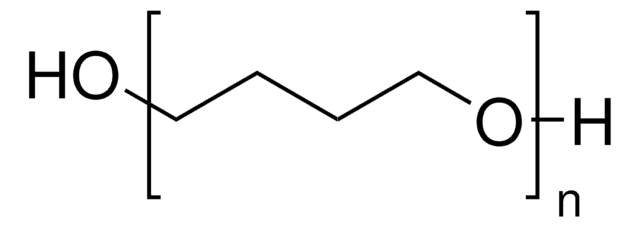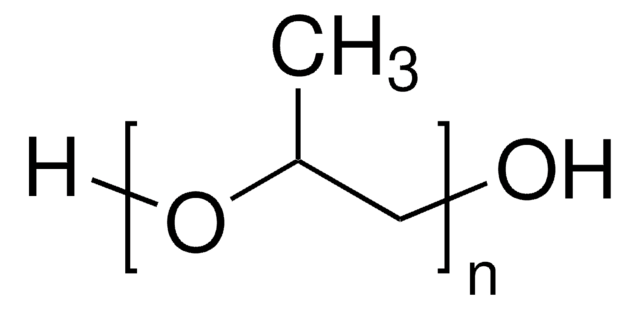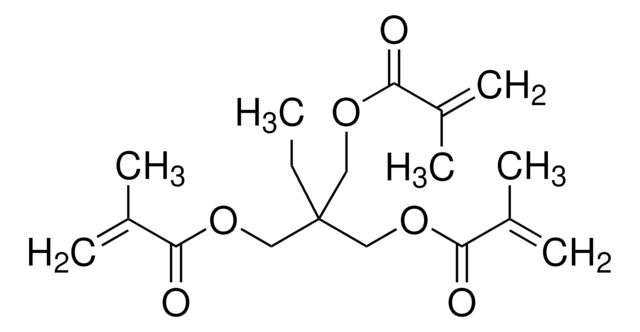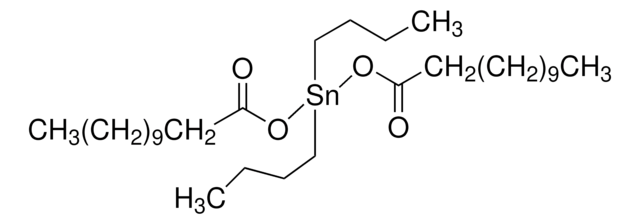345288
Poly(tetrahydrofuran)
average Mn ~650
Synonyme(s) :
Terathane® 650 polyether glycol, poly(tetramethylene ether), α-Hydro-ω-hydroxypoly(oxy-1,4-butanediyl), Poly(1,4-butanediol), polyTHF
About This Item
Produits recommandés
Pression de vapeur
<0.01 mmHg ( 25 °C)
<1 mmHg ( 20 °C)
Poids mol.
average Mn ~650
Contient
0.05-0.07% BHT as stabilizer
Indice de réfraction
n20/D 1.465
Pf
11-19 °C
Densité
0.978 g/mL at 25 °C
Chaîne SMILES
OCCCCO
InChI
1S/C8H18O2/c1-3-5-6-10-8(4-2)7-9/h8-9H,3-7H2,1-2H3/t8-/m0/s1
Clé InChI
BJZYYSAMLOBSDY-QMMMGPOBSA-N
Vous recherchez des produits similaires ? Visite Guide de comparaison des produits
Description générale
Application
Informations légales
Mention d'avertissement
Warning
Mentions de danger
Conseils de prudence
Classification des risques
Acute Tox. 4 Oral - STOT SE 3
Organes cibles
Respiratory system
Code de la classe de stockage
10 - Combustible liquids
Classe de danger pour l'eau (WGK)
WGK 3
Point d'éclair (°F)
474.8 °F - Cleveland open cup
Point d'éclair (°C)
246 °C - Cleveland open cup
Équipement de protection individuelle
dust mask type N95 (US), Eyeshields, Gloves
Faites votre choix parmi les versions les plus récentes :
Déjà en possession de ce produit ?
Retrouvez la documentation relative aux produits que vous avez récemment achetés dans la Bibliothèque de documents.
Les clients ont également consulté
Notre équipe de scientifiques dispose d'une expérience dans tous les secteurs de la recherche, notamment en sciences de la vie, science des matériaux, synthèse chimique, chromatographie, analyse et dans de nombreux autres domaines..
Contacter notre Service technique












